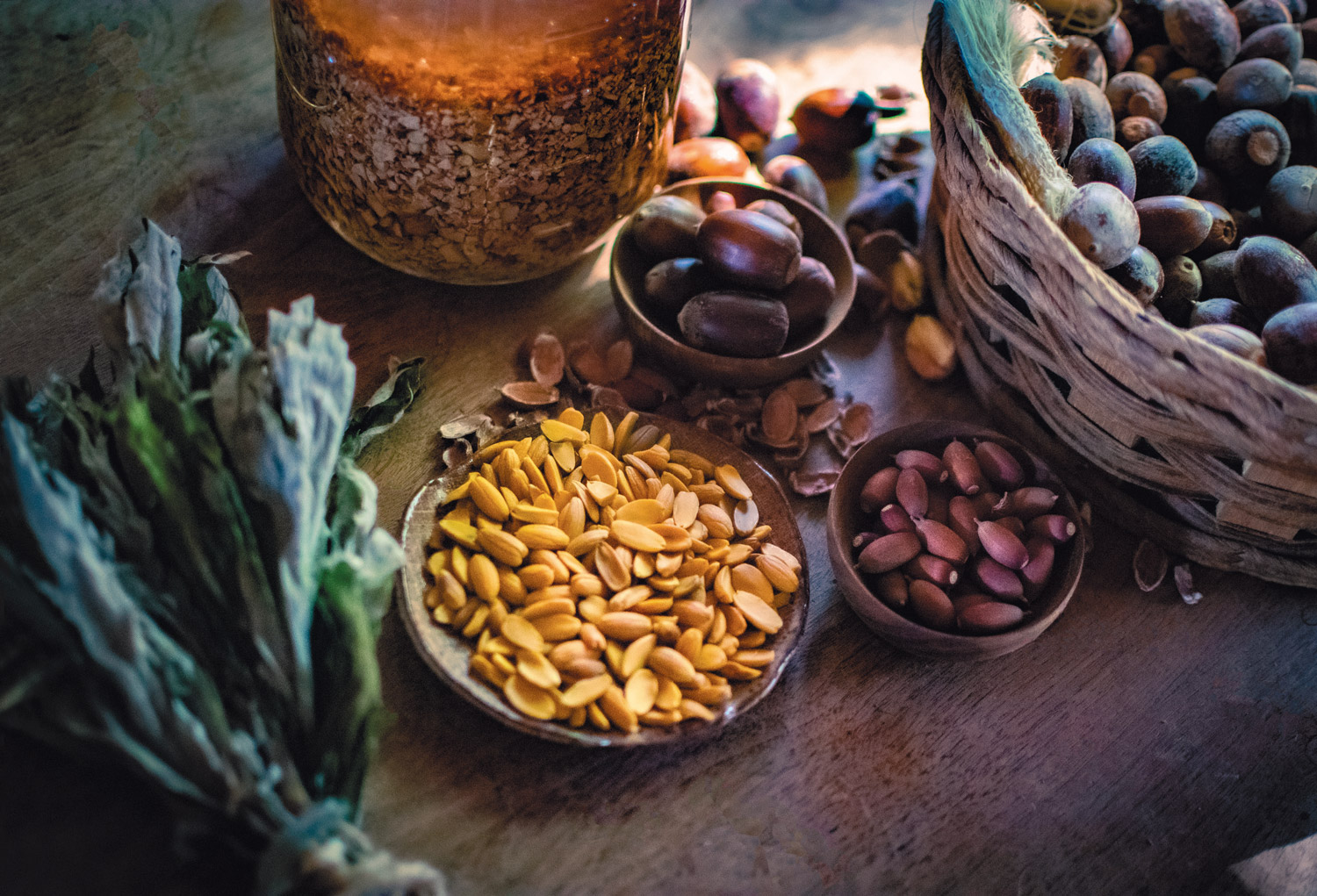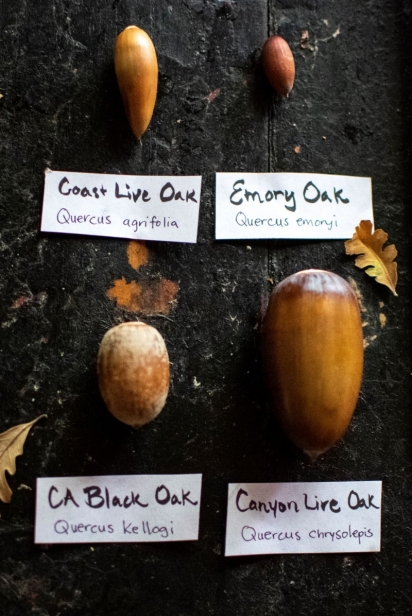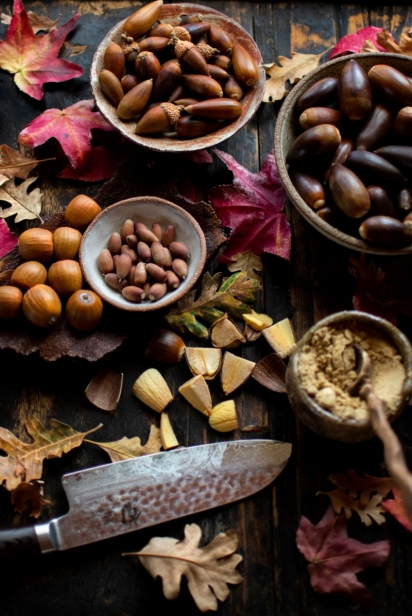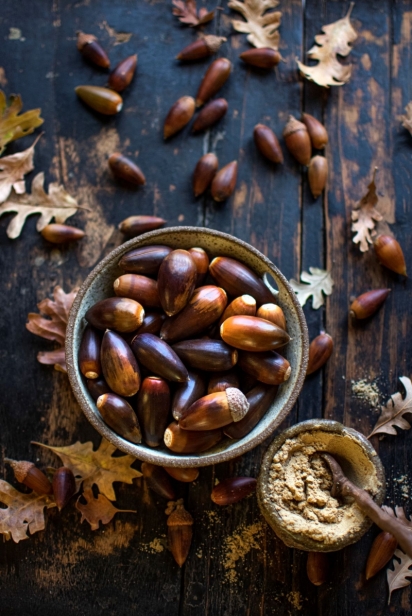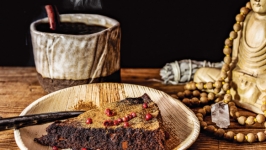How to Eat an Acorn
Turning a Forgotten Food into a Culinary Curiosity
Acorns, the long-overlooked edible nut of the oak tree that has fed not just squirrels but humans all across the world for millennia, are often erroneously considered inedible or even toxic. Like many wild foods, most acorns can’t be eaten right off the tree; they take a little bit of effort and time to render them not only edible but delicious.
Oaks are loaded with tannins and so are their acorns. Take a bite into a raw acorn and you’ll get an unpalatable strong bitter and astringent taste— that’s the tannins. Too many tannins imbibed are unhealthy and prevent the body from absorbing nutrients. But consider: We consume small amounts of tannins every day in the form of tea, coffee, wine, chocolate and legumes. So how do we get past this and turn them into a rich, nutty and tasty nutritious ingredient? A simple, yet lengthy, process called leaching yields a delicious nut that can be used in pancakes, cookies, breads, tortillas, plant-based burgers, drinks, desserts and so much more.
Harvesting: Collect acorns that are heavy, avoiding any with holes (evidence of acorn weevils) or that are clearly damaged. You can test whether acorns are good by putting them in a bucket of water and discarding any that float.
Shelling: There are many methods for removing the shells, but my preferred way is to slice them into quarters using a very sharp knife and a towel. This is best done when fresh. If your acorns are dried, a nutcracker or rubber mallet can work as well. Discard any discolored or infested shelled acorns.
Leaching—Hot Method: This is the quickest way to leach the tannins out of your acorns but a lot of flavor, starch and nutrients are lost, making your acorns less ideal for flour. Bring two pots of water to a boil, add your whole or chopped acorns to one and boil until the water changes to a tea color. Transfer the acorns to the next boiling pot of water (never allow them to cool between boilings to avoid locking in the tannins). Continue to boil and repeat this process until the water is clear or the acorns are no longer bitter. Different species will require more or fewer changes of water. You will know by the absence of bitterness when they’re ready.
Leaching—Cold Method: While it can take considerably longer, this process keeps the starch necessary for many baking recipes. After shelling your acorns, blend them into a coarse meal using a high-powered blender, food processor or mill. Add them to a large jar and fill the rest with an ample amount of cold water. Shake or stir thoroughly. Let it sit in the refrigerator and the meal will settle at the bottom. At least once a day, strain off the water at the top and refill with fresh cold water. Repeat until the meal no longer has a bitter aftertaste. This process can take anywhere from one to seven days. Strain and press the meal through several layers of cheesecloth or clean towel.
Finishing: After leaching, the chopped acorns (if hot leaching) or acorn meal (if cold leaching) can be frozen or dehydrated for later use and added to recipes. Acorn meal can be dehydrated and powdered to use as a flour in baking. Try roasting acorn flour for a deeper and richer flavor.


